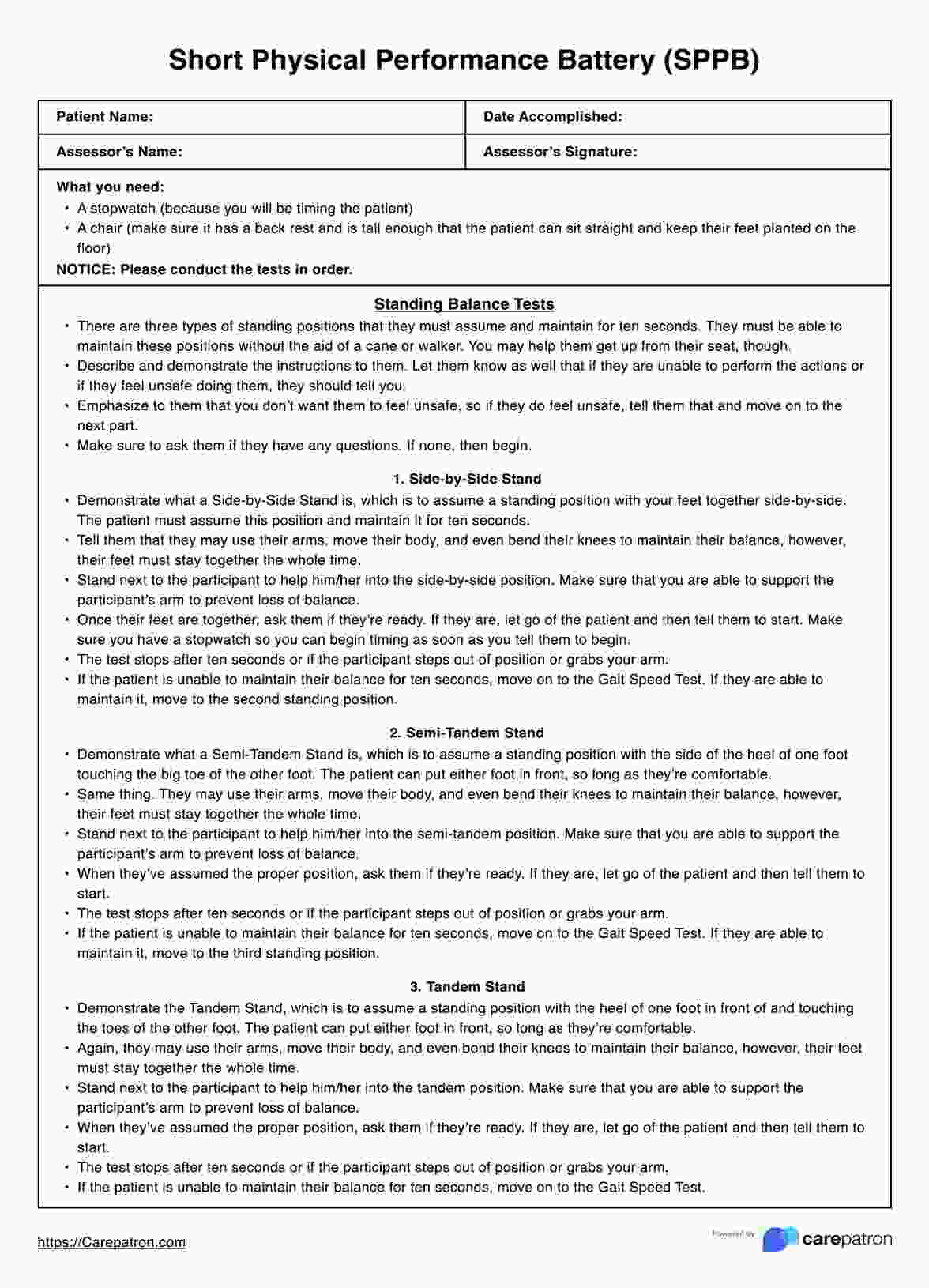No, the tests included in the Short Physical Performance Battery (SPPB) are designed to be safe and non-invasive. However, healthcare professionals must follow proper procedures, provide adequate support, and ensure a secure testing environment to minimize potential risks. The emphasis on participant safety during the tests, such as standing balance assessments, walking tests, and chair stands, is paramount.

Short Physical Performance Battery
If you need to assess the physical function and mobility of elderly patients, use the Short Physical Performance Battery (SPPB) to gauge their lower extremities in order to get a good look at their balance, gait speed, and strength of their lower extremities.
Short Physical Performance Battery Template
Commonly asked questions
While the SPPB is a valuable tool for assessing lower extremity function in older adults, it does have some limitations. It primarily focuses on physical performance and may not capture all aspects of an individual's health. Additionally, the test results should be interpreted in conjunction with other clinical assessments for a comprehensive understanding.
The SPPB may be unsuitable for certain populations with severe mobility limitations or cognitive impairments. Like any assessment, the context of the individual's health and specific circumstances should be considered.
The Short Physical Performance Battery (SPPB) is scored based on the performance of the individual in three components: standing balance, gait speed, and chair stand. Each component has specific criteria for scoring. For the standing balance tests, participants are scored on their ability to maintain balance for a set duration.
Gait speed tests are scored based on the time taken to walk a designated distance. The chair stand tests assess the ability to stand from a seated position, with scoring dependent on the time taken and the number of completed stands. The total SPPB score is the sum of scores from all components, with a maximum score of 12 indicating better physical performance.
EHR and practice management software
Get started for free
*No credit card required
Free
$0/usd
Unlimited clients
Telehealth
1GB of storage
Client portal text
Automated billing and online payments











